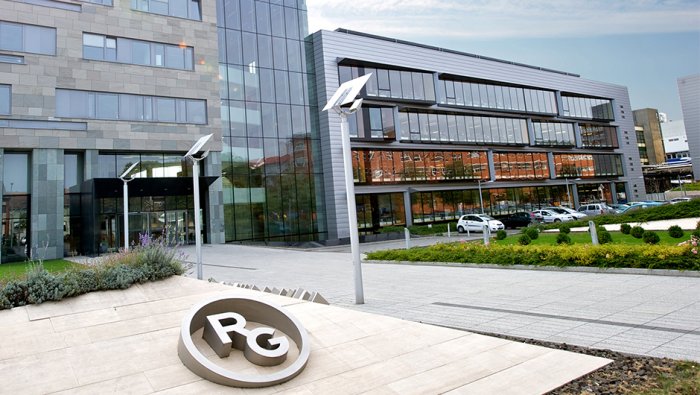World's efforts to reduce carbon-dioxide emissions

The World Wild Fund (WWF) last month issued organization's vision for 2050, drafted by 100 scientists and meteorologists in Geneva, Switzerland.
The report points out that the world has enough sustainable energy and new technology to satisfy the world's increasing energy demand, while reducing CO2 emissions by 60-80%. In actuality, one can also look at the effective measures taken by various countries in the world to reduce CO2 emissions.
The US: New York's policy works
The US is the country that releases the most greenhouse gas emissions, but environmental protection measures in New York are quite effective. The population in New York accounts for 2.7% of the nation's total population; but on average, one New York resident releases enough CO2 emissions to account for about one third of the American average. The reason for this is that public transportation is highly utilized in the city, and helps reduce the amount of car emissions.
New York also promotes many environmentally friendly activities encouraging residents to use hybrid fuel vehicles and energy saving vehicle lights. The region also promotes green and energy-saving building construction that helps stabilize greenhouse gas emissions. Even so, between 1995 and 2005, New York's greenhouse gas emissions still grew by 8%. The US government has also made a lot of economically supportive policies to control greenhouse gas emissions. The policies include the trade of emission rights among enterprises and the collection of emissions fees.
The trade of emission rights allows certain industries to establish a certain quantity of emissions or an emissions rate. However, enterprises within the industry must commit a specific emissions quota and can exchange their emission rights with one another. Collecting emissions fee can persuade enterprises to reduce their emission at a lower cost. As a result, the cost to reduce emissions becomes lower than the cost of emissions.
The Bush administration has expressed that, in the fall, the US government will organize a series of meetings to discuss the long-term global goal for greenhouse gas emissions. On the basis of this long-term goal, various countries can create their own mid-term CO2 emissions reduction goals and measures according to their present and future energy demands.
Great Britain: both government and citizens have taken measures
Britain began their CO2 emissions reduction at transportation. Since 2003, the British government has mandated that between the hours of 7:00 and 18:30 each day, vehicles that go through London city center must pay a £5 traffic jam fee. By 2005, this fee increased from £5 to £8 per day. If the driver fails to pay, he or she will face a fine of £100. From 2003 to 2013, the British government will use this £130 to £150 million of traffic jam fees to develop various transportation facilities in London including roads, public bus and rail transport.
The government has also hired a consulting company to conduct a detailed appraisal and quantified analysis of the energy consumption situation and energy-saving potential in major industries. They created energy saving goals according to the analysis, and require various industrial departments achieve this goal. Since 2001, a climate change tax has been imposed on British enterprises. The tax causes the enterprises' fuel costs to increase by 10-15%.
Meanwhile, in order to encourage the reduction of CO2 emissions, the government also has made some tax reduction measures. For example, those who sign agreements with the government and complete its regulated CO2 reduction goal will receive an 80% reduction in the climate change tax. The government uses the climate change tax to set up funds for providing loans, auditing and training services to enterprises.
Japan: Prime Minister Shinzo and his wife are spokespersons
The Japanese government publishes an advertisement that takes up one entire page in major newspapers in Japan every Tuesday. In the advertisement, Prime Minister Abe Shinzo, who wears a T-shirt and a pair of slippers, is adjusting the brightness of a bulb while his wife watches. The theme of the advertisement: Everybody reduces one kilogram of CO2 emissions every day. Abe Shinzo stressed that the short-term goal of the government is to immediately attract the attention of its citizens toward the environmental issue and encourage them to do little things within their immediate environment. He said that, "we want to send a message to the citizens that the threat will inevitably affect every one. Environment protection needs our constant attention."
Various companies in Japan also pay attention to environmental protection. All office and commercial buildings have installed new type of air-circulation system. Most air conditioners use the heat from electricity generation; iron, steel factories and other resource recycling processes; and solar energy as sources of power. Indoor temperature ranges from 20 degrees Celsius in the winter and 28 degrees Celsius in the summer. In addition, the Japanese people's awareness of environment protection is also quite broad. For example, they often take their own bags to supermarket to shop and buy low-fuel emission cars instead of large luxury vehicles. Hopefully people can find some inspirations from these examples, and do more to reduce carbon dioxide emissions for a better future. (english.people.com.cn)
SUPPORT THE BUDAPEST BUSINESS JOURNAL
Producing journalism that is worthy of the name is a costly business. For 27 years, the publishers, editors and reporters of the Budapest Business Journal have striven to bring you business news that works, information that you can trust, that is factual, accurate and presented without fear or favor.
Newspaper organizations across the globe have struggled to find a business model that allows them to continue to excel, without compromising their ability to perform. Most recently, some have experimented with the idea of involving their most important stakeholders, their readers.
We would like to offer that same opportunity to our readers. We would like to invite you to help us deliver the quality business journalism you require. Hit our Support the BBJ button and you can choose the how much and how often you send us your contributions.








